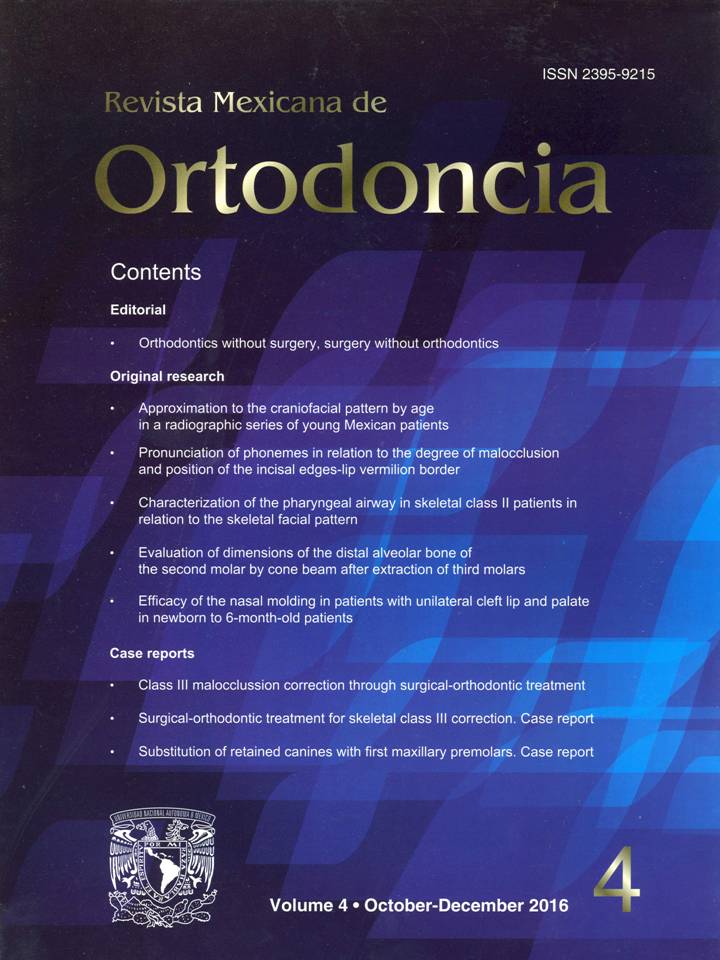Efficacy of the nasal molding in patients with unilateral cleft lip and palate in newborn to 6-month-old patients
Contenido principal del artículo
Resumen
Objective: The aims of this research were to assess and describe the clinical changes in the nostril that shows depression and asymmetry in patients with unilateral cleft lip and palate (UCLP) treated with presurgical nasoalveolar molding (PNAM) in the Center of Medical Specialties of the State of Veracruz (CEMEV). Material and methods: An observational, descriptive, longitudinal and prospective
cohort study was carried out. 15 patients with ages between
0 and 6 months were part of the study. Measurements of t nostril height, nostril width, nasal basal width and columella length were performed at three times (T1, T2 and T3). Results: The vertical, horizontal and nostril base lengths showed a signifi cant decrease in the initial measurement (T1), presenting a close similarity with the healthy nostril, with only 0.8 mm of difference with the healthy nostril in the vertical dimension (p ≤ 0.000982 t Wilcoxon); in a horizontal
dimension, 5.02 mm (p ≤ 0.000023 t Student) and compared
with the measurements of the nasal base it was found that at T3 it decreased 51%, (p ≤ 0.00004 t Student). This refl ects the effectiveness of the nasal molding treatment for correcting the nasal asymmetry caused by a nasal, lip and alveolar cleft. Conclusion: Treatment with the PNAM is effective since it reduced by 50% at least nasal depression, compared with the initial and fi nal measurements.
